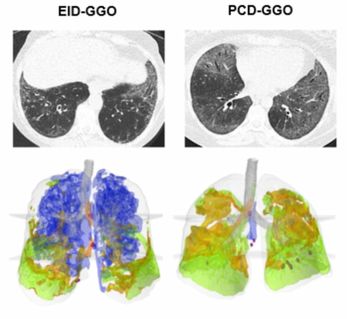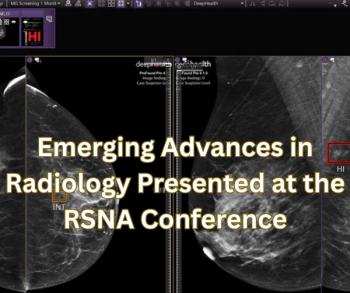
MRI May Predict Preterm Birth
MRI helped predict which women with short cervix would go into preterm labor.
Using MR imaging to evaluate apparent diffusion coefficient (ADC) of the cervix among pregnant women may help detect impending preterm birth, according to a study published in
Researchers from Italy and Switzerland performed a prospective hypothesis-generating study to determine the utility of using MRI to assess ADC among asymptomatic patients with a sonographic cervical length of 15 mm or less and positive fetal fibronectin test results between 23 and 28 weeks of gestation.
Thirty pregnant women (mean gestational age, 26 weeks) were included in the study. The women had a parity of 0 or 1, with no history of preterm birth, cervical procedures, or congenital abnormalities of the uterus. All underwent pelvic 1.5-T MR imaging the same day as undergoing vaginal ultrasound. Oblique sagittal diffusion-weighted images were obtained with b values of 0, 400, and 800 sec/mm2. ADC values at MR imaging of the subglandular and stromal cervix and the difference between both were correlated to the interval to delivery. The images were reviewed by three radiologists.
The results showed that eight (27%) of the 30 patients delivered within six or seven days of MR imaging (impending delivery group), and 22 (73%) of 30 patients delivered between 18 and 89 days after imaging, a mean of 55 days (late delivery group). The women in the impending delivery group had higher mean subglandular ADC and mean ADC difference than those with late delivery:
The receiver operating characteristic curve analysis of subglandular ADC revealed 100% sensitivity and specificity in association with impending delivery with a 1921 × 10−6 mm2/sec threshold. The radiologists did not find significant differences between the two groups in cervical length or incidence of US visualization of the cervical glandular with ultrasound examination.[[{"type":"media","view_mode":"media_crop","fid":"47241","attributes":{"alt":"","class":"media-image media-image-right","id":"media_crop_2104032209835","media_crop_h":"0","media_crop_image_style":"-1","media_crop_instance":"5545","media_crop_rotate":"0","media_crop_scale_h":"0","media_crop_scale_w":"0","media_crop_w":"0","media_crop_x":"0","media_crop_y":"0","style":"height: 196px; width: 200px; border-width: 0px; border-style: solid; margin: 1px; float: right;","title":"Figure 1. Image in a 29-year-old woman at 28 weeks of gestation with a sonographic cervical length of 6 mm who was referred for evaluation of suspected corpus callosum dysgenesis. Oblique sagittal T2 half-Fourier acquisition single-shot fast spin-echo MR image shows a short cervix (white line) with funneling. ©RSNA 2016","typeof":"foaf:Image"}}]]
The researchers concluded that cervical subglandular ADC at MR imaging is associated with impending preterm birth in patients with a short sonographic cervix. Although further research is needed, MR imaging could help predict premature births, allowing physicians to attempt to slow the progression of labor and to help improve fetal lung maturation.
Newsletter
Stay at the forefront of radiology with the Diagnostic Imaging newsletter, delivering the latest news, clinical insights, and imaging advancements for today’s radiologists.




























